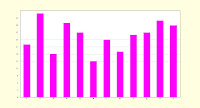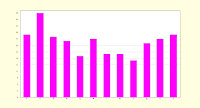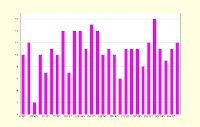There are numerous ancient monuments in the vicinity of Dingle that are well visited by tourists and locals alike. Not so well known is Log na nGallán (place of the standing stones) on a hilltop called Arda Mór about 10 kilometers from our house.
Three Stones with Peader for perspective
Three standing stones close together in a straight line are aligned to the setting sun at Winter Solstice. There is a fourth stone that was a puzzle to me when I first visited the place several years ago. None of the locals that I spoke to knew its purpose.
Fourth Stone
After pacing over and back several times I discovered that the fourth stone indicates where to stand in order to see the setting Sun aligned with the three stones. If you put your back to the three stones and walk in their alignment, away from the setting Sun, until the fourth stone is at right angles to your path, this is the spot to view the setting Sun over the three stones.
Cup and Saucer pattern on 4th
Fourth stone has a cup and saucer pattern often found on these stones.
Moon nearly full opposite Sunset 1
Today I arrived there with my friend Peader about a half hour before sunset and we were joined by just five other people. The place is however fairly remote and there are no sign posts to get there. The Moon was up on the far side of the sky.
Sunset over standing stones
Peader read a poem in Irish that he had written describing this place and this event. One of the other people called John Ahern read a piece he had written that lead over into Christianity and to the Trinity.
sometimes meet with disappointment. Today we had some cloud that added suspense and drama to the event but we had a clear view of the sun for most of the time. There was no wind which is unusual for here and there was a very delicate peaceful atmosphere.
Back at our cars, John provided us all with hot tea and raisin bread. Sin é(that’s it)
Winter Solstice
Standing Stones










